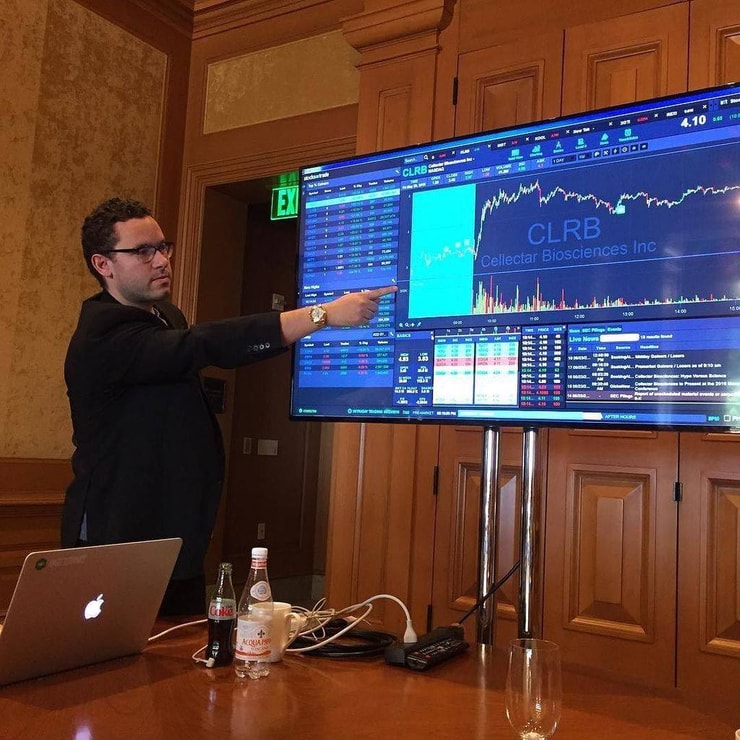I told you that there are profit opportunities every day in this niche …
Profit opportunities for small-account traders:
- Cheap stocks.
- Spiking +100%.
Traders can load up on shares and ride the percent gain for profits.
For example, yesterday I snagged a 13% profit on Golden Sun Health Technology Group Limited (NASDAQ: GSUN). And the price never spiked above $8.
Larger stocks usually don’t move as much intraday. You’re lucky to see a blue-chip stock spike 10%. Let alone 150%* like GSUN yesterday.
I’m not trying to snag the entire move. The reason I focus on big runners is because there’s more room for error. Stock trading is inherently risky. I can mitigate that risk by aiming for specific price action on big percent gainers.
Take a look at the move on GSUN below, every candle represents one minute:

Here’s how I traded it …
Morning Opportunities

The biggest profit opportunities for small-account traders usually start running in the morning.
The company announces news during premarket hours. And the price action reacts volatally to the news.
On May 7, GSUN announced that the company had regained Nasdaq compliance.
Spoiler alert: Most of these cheap stocks are garbage. Like GSUN, they’re a few mistakes away from delisting from the market entirely.
We’re not investing in these companies. We just trade the volatility when they announce bullish news.
Here are my trade notes from yesterday’s profit on GSUN:

Again, notice, my goal was to make 5 – 10% on the trade. Even though the stock spiked 150%* in total.
My strategy is to trade the most predictable part of the move, then I cash out and wait for the next big runner.
In our niche, there are new stocks spiking like GSUN every single day.
And they start to move in the morning.
Traders get alerts when there’s a stock running with a bullish catalyst. All I have to do is wait for the stock to match my framework.
See my Tweet below with more information:
FYI I have barely any wifi, barely any sleep, insane day and I just nailed a good chunk of $GSUN for nearly $1/share in CONSERVATIVE PROFITS if you're not banking right now and using https://t.co/6cuTVNHVBf every single day you're missing out GREATLY, congrats to all longs,…
— Timothy Sykes (@timothysykes) May 7, 2024
Take a look at the alert we got on GSUN yesterday. On the chart below, every candle represents one minute:

>> Here’s where I get the next news alert <<
Traders had all morning to build a position on this runner. And the price action matched my trading framework perfectly.
Trade Patterns

The most volatile stocks in the market can follow popular patterns because people are predictable during times of high stress.
Like when they have a couple thousand dollars in a stock that’s spiking +100% intraday. These patterns are based on human psychology more than anything else.
Over twenty years ago, when I first started trading in college, I stumbled upon this common framework.
And ever since, I’ve used this strategy to profit in the market. I’ve also taught others … So far I have over 30 millionaire students, and that number keeps climbing.
One of my most successful students, Jack Kellogg, started in 2017. Currently he’s managed to pull an insane $12.6 million from the stock market using my strategies.
Yes, it’s the same strategy over and over again.
And this week there’s a FREE opportunity to get in on the next big trade … I already moved $500,000 from my trading account to prepare for this specific setup.
See my Tweet below:
It’s been great celebrating @Jackaroo_Trades birthday here in Japan, but I’m even more excited about the special FREE https://t.co/ZeAm4N9XNP event we’re hosting this Thursday, May 9th at 8pm EST because while Jack has now made $12+ million, and nearly $1 million already in 2024,… pic.twitter.com/Z3ba4TmGLk
— Timothy Sykes (@timothysykes) May 7, 2024
Jack is going live on May 9 at 8 P.M. Eastern to show traders the entire setup.
>> This is your FREE ticket to attend <<
Don’t miss this opportunity to profit. I’ll see you there!
Cheers.
*Past performance does not indicate future results


Leave a reply